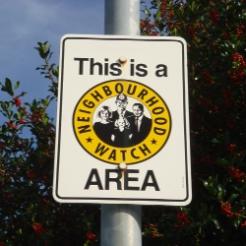New research by the Third Sector Research Centre that attempts to map the extent of community activity taking place around the country suggests that there is a vast amount of activity taking place that gets missed by traditional surveys.
The TSRC researchers mapped self-organised activity within two very small geographical areas of England and identified 58 community groups operating in and around just 11 streets.
They found that a diverse range of services and activities are undertaken by groups beneath the official radar. They tend to be based around a particular topic of interest or operate for a particular ‘target community’, such as a faith or ethnic community, elderly or disabled people.
Report author Andri Soteri-Proctor said the findings could have implications for policy-making: “Making this sector more visible to policy-makers and the wider public can help increase understanding about their role, capacity and contribution within the wider third sector and society at large.”
Exact figures elusive
However, it is impossible to pin down the exact number of community groups that are operating throughout the UK, or the numbers of people involved with them.
Navca’s director of policy and communications, Neil Cleeveley, told civilsociety.co.uk that: “Research guesses put the number of under-the-radar groups at around 900,000.”
His colleague, policy officer Peter Horner added: “Many neighbourhood groups will be unincorporated organisations and many won’t be charities either. Therefore they have no requirement to register with a regulatory body or make themselves known in any official way.
“We estimate Navca members are in contact with over 30,000 neighbourhood groups and there will be significantly more than that.
“However like all definitions it is very vague and everyone will view it differently. For example is every single neighbourhood watch group a neighbourhood group? Some of these will serve only a few houses but they could be seen as bringing people together in their neighbourhood to help improve it. If you decide to count them - there are 170,000 just of them. Are community centres neighbourhood groups? And so on and so on.
“Many neighbourhood groups will also tend not to have formal memberships or if they do that number will not necessarily reflect the number of people involved with the organisation. Also many of these groups can be fairly transient in nature. Therefore it is difficult to gauge and estimate numbers.”
All activity needs resourcing
Another key finding from the TSRC report was that self-organised activities need some form of resourcing to exist – whether time, space, skills, or financial support. Groups generate resources by ‘tapping in’ to their own users, such as by charging nominal fees or asking for donations, and ‘tapping out’ to others, through entrepreneurial activity, small grants or donations in kind.









